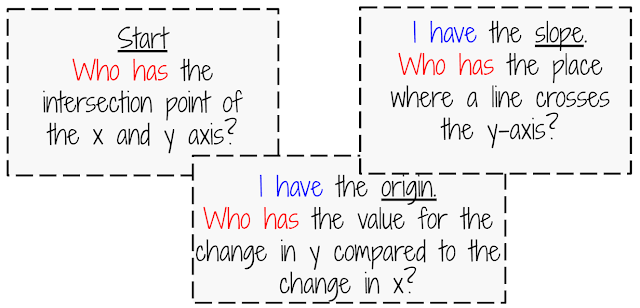I am always looking for ways to intentionally engage with vocabulary. One of my favorite strategies to get students speaking and thinking is an activity called I Have Who Has. Each student gets a card (see the example below). The teacher starts with the start card and reads it aloud. The student who has the answer to that question responds by reading their card and asking the next question. The game continues in this way until the end card.
Things I love:
2. Students have to really focus and listen to the definitions as they are being read. Speaking and listening are two language domains that can easily be overshadowed by reading and writing but are equally as important in language development!
3. Students are somewhat forced to engage because if they check out or stop listening they become the weakest link in the chain.
It is important to acknowledge that ELL students may be super overwhelmed to read out loud whole group but that doesn't mean they shouldn't get the opportunity. A little pre-teaching or scaffolding may be needed. Set them up for success!
As part of my work as a high school learning coach (instructional coach) I was fortunate enough to work with an AP Human Geography teacher who was looking for more ways to purposefully plan and engage with vocabulary. We created a deck of I Have Who Has cards for all of her 7 units for the year and placed visual cues or hints on the back of each one.
In addition to doing the whole group read through of the cards, we also had students work in small groups to race to make a chain of cards (like dominos). The discussions, arguments, and excitement as students worked together to define the words and find the matches was loud and super engaging.










No comments:
Post a Comment